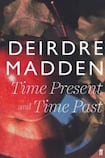
“He thinks how, after dinner the other night, he had asked his whole family to sit quietly for a moment before they dispersed. When it happened he could hardly have said why he wanted it; it had been a spontanous request. Now he thinks it had something to do with the idea of stopping time.”
Fintan Buckley is a 47-year-old legal adviser who lives in Howth, in Co Dublin, with his warm-hearted wife, Colette, and their three children. He is middle class, mild and polite. Ordinary, like all the characters in the novel with the possible exception of Fintan’s mother, Joan, an overbearing woman disliked by her children. Sipping coffee in the National Museum and buying expensive clothes in Brown Thomas, Joan wonders if there’s any better life than hers – that of a widow.
Set over three months, in the spring of 2006, the novel doesn’t so much tell a story as provide a snapshot of the extended Buckley family at an interesting juncture in Ireland’s history, the final year of the boom.
The impact of the past on the present, of personal history in the form of disapppointment or childhood trauma on adults, is explored. For instance, Martina, Fintan’s beautiful sister, besides suffering from her mother’s coldness, nurses a bigger secret wound, the nature of which is eventually revealed in an episode as shocking as it is unexpected. And Joan has had her own troubled past.
As well as looking at the effects of personal history on the characters, the novel deals to some extent with the impact of national and international events on individual lives, finally focusing on a moment when the personal and the historical intersect, quietly but devastatingly:
"It is perhaps interesting to note, in light of Fintan's recent thoughts, that one of the first in a series of dramatic events, as everything begins to unravel, will take place in the middle of the night, namely the bank guarantee.
All the citizens of Ireland will be asleep.”
Here the novel takes a look at the future, foretelling, in a chilling matter-of-fact tone, the impact that the bank guarantee and the recession will have on the destinies of the characters, especially the younger ones.
At this point in her hitherto realistic novel, Madden takes quite a risk. While her cast is in bed, fast asleep, the invisible narrator steps on to their stage and reads a crystal ball, as it were. Omniscient narrators can tell the future as well as the past, she seems to be saying. This is a truth universally denied, by writers and readers in the mode of realism, because it draws attention to the artifice of the form, but it is perhaps one of the points Madden wishes to make. This is a novel with a disarmingly simple surface but more than one intriguing layer. It is a book of questions.
Apart from the major dramatic event, the banking crisis, which is set two years later than the narrative, little of any great moment happens. The Buckleys, unaware that they are the playthings of invisible financial gods, go about their comfortable lives. They cook, catch the Dart, call on their relatives, visit the zoo and go shopping (quite a lot: the novel, although mainly filtered through Fintan’s eyes, paints a detailed, essentially feminine map of Dublin; it’s good on clothes). In short, like many people, they measure out their lives in new frocks and coffee spoons, to paraphrase a line by the poet who supplies the title and theme of the novel. Thanks to Madden’s skill, and her respect for her characters, her portrayal of their uneventful lives is not deadly dull, as it might be in the hands of a lesser, or less compassionate, writer. It is enthralling.
Fintan has one extraordinary trait: he is a seer. He has occasional visions, in which he sees pictures of the future and of the past overlaying what he is observing in the present. These scenes present themselves to him like photographs, and one of his interests is the history of early colour photography. This could be interpreted as a metaphor for fiction, which – like photography – tries to freeze and immortalise the fluid thing that is time. And, just like Fintan, novelists envisage or imagine the past and the future.
Such philosophical and metafictional concerns provide the more exciting strands of the novel, but the surface is interesting too, even though there is a sense in which Madden's novel is an example of anti-narrative literature. It seems to deliberately snub fiction's conventions. It more or less dispenses with drama, and it drifts sleepily into life with a laconic opening line (rather like Howards End): "Where does it all begin? Perhaps here, in Baggot Street . . . It seems as good a place to start as any."
Even the prose is careful not to draw attention to itself. Initially the writing seems too spare, even flat; gradually one appreciates how alive it is. Is the writer questioning the value of fiction itself? Refuting EM Forster’s famous reluctant acceptance that “oh dear, the novel tells a story”? There is precious little in the way of dramatic story in this book. Oh dear. And yet it is full of everyday tales, simply told, and they are more than enough.
Elegantly written, deeply reflective and beautifully shaped, this rich and luminous novel is more daring than it seems. It is an understated little masterpiece.
Éilís Ní Dhuibhne's most recent book is The Shelter of Neighbours. She teaches creative writing at the School of English, Drama and Film, University College Dublin.








